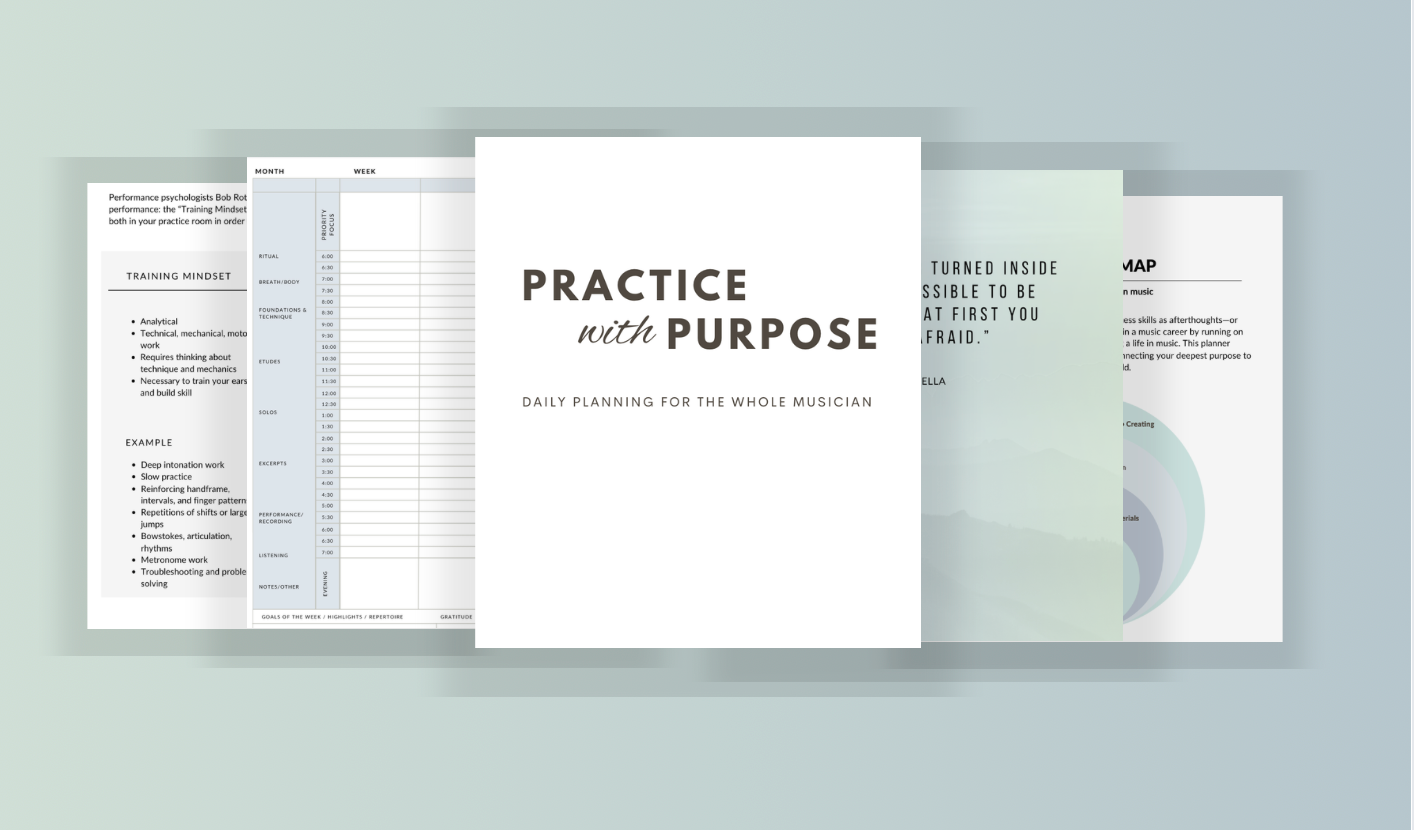How to Build Resilience

Howdy, it's Ixi here today! Did you read the blog post from last week (Jan 31 Embrace the Hard)?
If not, go back and give it 5 minutes of your time. In it, Tiffany talks about the anxiety that surfaces for her before big performances (something to which I think we can ALL relate) and we learn that it's only through honestly, deeply, facing her fears that she can navigate THROUGH them.
To me, her reflection was a fantastic masterclass in resilience.
Resilience, and the skills to build resilience, are something we think about often here at Music360. Being women, being performers, working in the music industry, and coaching hundreds of students over 30+ combined years we know this...
Resilience is the #1 skill you need on the path to bringing your biggest goals to life.
The dictionary defines resilience as "the capacity to recover quickly from difficulty; toughness" and while it's often associated with bravery or courage, practically speaking it's much more about these things:
- self-awareness
- flexibility of focus
- the ability to let go physically and mentally, and
- sustaining positive emotions
These tools can look very different from day to day, situation to situation, and is not often one-size-fits-all. Sometimes it means showing up with courage and other times it's finding the wisdom to step back, self-soothe, or gather the strength to simply stop and shift gears.
Build this skill and not only will it allow you to bounce back from the necessary difficulties of life, it will also be the key to good mental health.
So let's break this down a bit to understand how we can practice this skill of developing resilience. Because practice is everything.
1. Become self-aware.
As social scientist and bestselling author Brené Brown puts it:
"Resilience is more available to people curious about their own line of thinking and behaving."
People who navigate tough things in a healthy way are able to sit with uncomfortable emotions. Fear, uncertainty, shame, or sadness… these are the emotions we want to push away or change or even deny. The thing is, as humans we are feeling beings first and thinking beings second.
Exercise:
Step 1 - Record yourself playing a tricky passage. Observe everything you think and feel. What is your inner voice saying? Immediately afterward, write everything down. You might write something like this: "My mouth felt really dry. My fingers started to shake at measure 4. I'm worried about what people will think if I mess this up. I have terrible technique. My pinkies just won't move fast enough. And my tongue is so heavy and slow."
Step 2 - Record yourself speaking these thoughts. Ideally, record this on a second track over the audio of your playing.
Step 3 - Listen back clearly to your own voice, and be gentle with yourself. You'll hear your voice in a real and powerful way. Just observe. You can name this voice if you like.
2. Get curious.
Now that you're wading into all this discomfort it's time to find you flexibility of focus. Instead of being fixated on the swirl of negative mental chatter, observe, then ask:
- What is going on here?
- What am I feeling?
- What's driving it?
- How am I responding to it?
If you find this difficult to do, write it down in a notebook, send yourself an email or quickly type it in the Notes app on your phone.
When you learn to be flexible - and courageous - enough to focus on the truth of your discomfort, you are making courage a habit. Soon, you'll be on your way to not only owning your story, but sharing it.
Exercise:
For each of the negative thoughts above, write a new thought, this time shifting the focus to a new story. This might sound like: "Everyone is human, and everyone gets nervous. I’m not “weird” and alone in this. Even the best performers in the world have tough performances." Or, "I can learn to love the pressure and put all my energy into that moment", and "I know that the reason I get nervous is that I care about doing a good job."
3. Let go.
This is a very mental and physical act of trust. Don't underestimate your ability to let go of what is ineffective or unhelpful.
For example, I've had to work incredibly hard to believe that I'm worthy. Worthy of being loved, worthy of being who I am and for all that's shown up in my life. Letting go of what people think, perfectionism, scarcity thinking, the "supposed to"s and "shoulds", of being cool, of being in control… the list goes on!
Exercise: Find a physical action that will link the mind to the body as you actively LET GO. It could be the release of breath. It could be singing to yourself quietly, or it could creating a confident posture or using positive body language.
4. Sustain positive emotion.
You may have heard the quote: "Darkness cannot drive out darkness; only light can do that" by Dr. Martin Luther King Jr., which then goes on to finish, "Hate cannot drive out hate: only love can do that".
Most of us are focused on driving out the negative, pushing it away, but I'm sorry, there's no such thing as a get-out-of-jail card for life's uncertainty, disappointment, risks, and turbulence. Learning to cultivate positive emotions like playfulness, humor, appreciation, worthiness, and connection can be like a light in the darkness. When you give your attention to positivity, it will naturally displace the negative.
Exercise A: Re-record your self talk for that tricky passage in # 1 above.
Exercise B: Build a ritual around your approach to easing anxiety. It could be a combination of a deep breath + a short mantra like "My sound is rich and full, and I root into the power of my air flow".
Ready for your assignment? After doing the exercises above, brainstorm ways you can build each skill. How can you be more self-aware? In what ways can you let go? What other questions can you ask yourself in order to dig deeper? What positive emotions are powerful for you?
What else has worked for you? Can you remember a time you were resilient?


